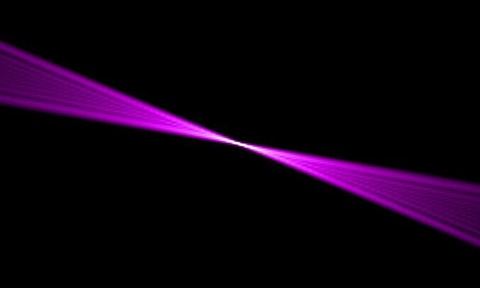X-ray lens magnifies nanoworld
1 Jun 2015

Scientists at Germany’s renowned X-ray institute, DESY, have created a lens that produces sharper images of the nanoworld.
The fabricated nano-lens acts like an artificial crystal, making it possible for the DESY researchers to mimic the high refracting power needed to produce clear images via X-ray.
Together with the improved resolution, the researchers claim they now have some of the “key ingredients” needed to develop a super X-ray microscope.
“It appears that the long-sought goal of focusing X-rays to a nanometre is in reach
Lead researcher Saša Bajt
“X-rays are used to study the nanoworld, as they are able to show much finer details than visible light and their penetrating power allows you to see inside objects,” said research team leader Saša Bajt.
X-rays have short wavelengths of only about 1 to 0.01 nanometres (nm), compared to 400 to 800 nm for visible light, Bajt said.
Therefore, the high penetration of X-rays is favoured for three-dimensional tomographic imaging of objects such as biological cells, computer chips, and the nanomaterials involved in energy conversion or storage.
However, this also means the X-rays pass straight through conventional lenses without being bent or focussed.
A fix for this, is to use crystals, as opposed to the expensive alternative of using X-ray mirrors, as the DESY researchers have demonstrated.
Today, artificial crystals can be tailor-made to sharply focus X-rays by depositing different materials layer by layer.
From this building block comes the multilayer Laue lens, made by coating a substrate with thin layers of the chosen substances, Bajt said.
“However, conventional Laue lenses (as commonly used) are limited in their converging power for geometric reasons,” Bajt said.
“To gain the maximum power, the layers of a [Laue lens] need to be slightly tilted - or ’wedged’ - against each other.”
Bajt’s team claims they are the first to create such an object.
To achieve this feat, the team invented a new production process, where a mask partially shields the substrate from the depositing material.
In the half-shade of the mask, a wedged structure builds up, and the tilt of the layers is controlled simply by adjusting the spacing of the mask to the substrate, Bajt explained.
The wedged [Laue lens] is then cut from the penumbra region.
“Before us, no one came close to building such a wedged lens”, Bajt said.
The researchers manufactured the lens from 5500 alternating layers of silicon carbide (SiC) and tungsten (W), varying in thickness, and tested it at DESY’s ultra-brilliant X-ray source, PETRA III.
“It appears that the long-sought goal of focusing X-rays to a nanometre is in reach,” Bajt said.
This will put X-ray imaging on par with the quality achieved with scanning electron microscopes, which typically have a resolution of 4 nm, the researchers suggest.
“Our novel lens concept will help scientists to peer deeper into the nanocosm and make previously inaccessible details visible,” said Bajt.

